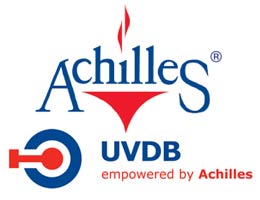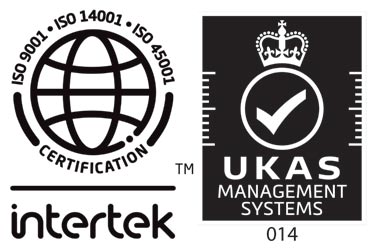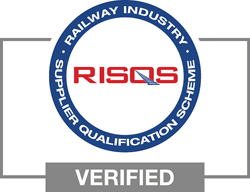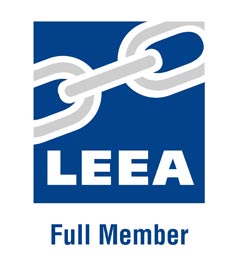Questions to consider for choosing a suitable electric chain hoist
- Required capacity
- Lifting height
- Ambient conditions:
- Normal Humidity
- Dust
- Dirt
- Particular temperatures °C
- Increased rel. humidity %
- Other
- How long is the hoist in operation:
- Load cycles per hour
- Hours per day
- Days per week
- Distance covered per lifting cycle
- Unusual operating conditions that could be important for the choice and function of the electric chain hoist
- Type of load:
- Permanent
- Changing
- Shocks
- Vibration
- Static
- Trolley drive
- Motor
- Manual
- Operating voltage:
- 400 V
- 230 V
- 3 - phase a.c.
- 1-phase a.c.
- Power frequency:
- 50 Hz
- 60 Hz
- Protection
- IP 54
- Other
General information about electric chain hoists
Apart from the usual criterion such as lifting capacity, lifting speed and dimensions also consider following: 1. Choosing a motor according to FEM 9.682 In addition to the torque the decisive criterion for rating an electric motor is the heat it generates. Here we differentiate between two operational modes. 1.1 Intermittent duty In this case the motor is designed for a series of equal cycles consisting of duty periods with constant load and rest periods. The heat generation depends on the relative duty cycle, that is, the relationship between operating period under load, total operating time and the number of starts/hour.
Duty rating ED = (Operating period / Operating period + rest periods) %
The number of cycles that can be made under full load is calculated as follows:
S ≈ 0,3 x ED x V / H
- S = Cycles per hour
- ED = Duty rating in %
- V = Lifting speed in m/min.
- H = Average lifting height in m
A cycle consists of a motion of lifting, lowering and the rest periods. One must ensure that the lifting height does not exceed the value permitted by the percentage duty cycle referred to a cycle period of 10 minutes.
H ≤ ED x V / 20
and that simultaneously the permissible number of starts is not exceeded. It is generally accepted that a cycle consists of 6 starts.
1.2 Short time duty
Where special duty conditions exist (e.g. long hook path) the operating period must be of such length that the admissible temperature limit of the motor is not exceeded. For such cases intermittent duty must be replaced by short time duty. That is, the motor may be operated for up to 10 starts over a certain period (usually 15 min.). Thereafter the motor must cool down to room temperature.
1.3 Calculation example intermittant duty:
- Electric hoist : CPM 5-8
- Lifting speed : 8 m/min.
- Lifting height : 2,8 m
- Duty rating ED : 50 % c/h : 180
Number of cycles per hour S = 0,3 x 50 x 8 / 2,8 = 42,8 Max. lifting height H = 2,8 ≤50 x 8 / 20 = 20 m Number of starts N = (25 cycles / hour) x (6 starts / cycle) = 150
2. Classification of hoisting equipment according to FEM 9.511
To choose an optimal hoist the lifting capacity and also the classification group must be known. The classification group indicates the theoretical operating time of the mechanical components under full load:
| Classification group | 1Bm | 1Am | 2m |
| Operating time in h | 400 | 800 | 1600 |
If the hoist is operated as classified an actual operating time of around 10 years can be expected. After this period a general overhaul is necessary. To define the classification group following values must be determined:
2.1 Average operating time per day
The average operating time can be estimated or calculated as follows:
Operating time/day = (2 x average hook path x cycles /hour x operating time/day / 60 x lifting speed
Electric hoists provided with counters for operating hours and number of starts simplifiy the classification (see CPM page 54)
2.2 Load spectrum
The load spectrum indicates to what extent a hoist or part thereof is subject to maximal stress or whether it is subject to smaller loads only. It can be calculated or estimated according to the diagrams on the right:
| 1 light | 2 medium | 3 heavy | 4 very heavy |
 |
 |
 |
 |
| Hoists or parts thereof usually subject to very small loads and in exceptional cases only to maximum loads. | Hoists or parts thereof usually subject to small loads but rather often to maximum loads. | Hoists or parts thereof usually subject to medium loads but frequently to maximum loads. | Hoists or parts thereof usually subject to maximum or almost maximum loads. |
2.3 Classification
The classification group is defined by operating hours and load spectrum:
| Load Spectrum | Aver. op hours per working day | |||
| 1 light | up to | 2 | 2.4 | 4-8 |
| 2 medium | up to | 1 | 1-2 | 2-4 |
| 3 heavy | up to | 0.5 | 0.5-1 | 1-2 |
| 4 very heavy | up to | 0.25 | 0.25-0.5 | 0.5-1 |
| Classification group acc. to FED/DIN 15020 | 1Bm | 1Am | 2m | |
Degrees of protection according to EN 60529
Depending on the operating and environmental conditions the damaging effect of water, foreign particles and dust and the contact with live or moving parts inside a motor is to be prevented by choosing a suitable protection. The marking used to indicate the degree of protection consists of the letters IP followed by two characteristic numerals. The marking applies to the unit as it is supplied and the defined or usual location of the unit. The protection can change if the unit is located or fitted differently.
| IP | 1st digit for protection against ingress of solid foriegn particles | 2nd digit for protection against ingress of liquid |
| 0 to 6 | 0 to 8 |
Motor cooled internally
| Protection | 1st digit contact protection | ingress of solid foreign particles | 2nd digit ingress of liquid |
| IP 00 | no protection | no protection | no protection |
| IP 02 | drops of water when tilted up to 15° from vertical | ||
| IP 11 | large surface contact | foreign bodies over 50 mm Ø | vertical water drops drops of water when tilted up to 15° from vertical spray water when tilted up to 60° from vertical |
| IP 12 | |||
| IP 13 | |||
| IP 21 | contact with fingers | foreign bodies over 12 mm Ø | vertical water drops drops of water when tilted up to 15° from vertical spray water when tilted up to 60° from vertical |
| IP 22 | |||
| IP 23 |
Motor cooled internally
| IP44 | contact with tools or similar | against solid foreign bodies over 1 mm Ø | spray water from all directions |
| IP54 | |||
| IP55 | complete protection against contact | damaging dust deposits | water jet from all directions |
| IP56 | momentarily flooding | ||
| IP65 | complete protection against contact | against ingress of dust | water jet from all directions |
Terminal boxes are usually supplied with protection IP 54 resp. IP 55.
Protection against contact and solid foreign particles
- First digit 0 - No protection
- No protection of persons against contact with live or moving parts inside the enclosure. No protection of equipment against ingress of solid foreign particles.
- First digit 1 - Protection against large solid foreign particles
- Protection against accidental or inadvertent contact with live or moving parts inside the enclosure by a large surface of the human body, e.g. hand, but not protected against deliberate access to such parts.
- First digit 2 - Protection against medium size solid foreign particles
- Protection against contact with live or moving parts inside the enclosure by fingers. Protection against ingress of medium size solid foreign particles of diameter greater than 12 mm.
- First digit - 3 Protection against small solid foreign particles
- Protection against contact with live or moving parts inside the enclosure by tools, wires or such objects of thickness greater than 2.5 mm. Protection against ingress of small solid foreign particles of diameter greater than 2,5 mm.
- First digit 4 - Protection against granular structured foreign particles
- Protection against contact with live or moving parts inside the enclosure by tools, wires or such objects of thickness greater than 1 mm. Protection against ingress of granular structured solid foreign particles of diameter greater than 1 mm.
- First digit 5 - Protection against dust deposits Complete protection against contact with live or moving parts inside the enclosure.
- Protection against harmful deposits of dust. The ingress of dust is not totally prevented, but dust cannot enter in an amount sufficient to interfere with the satisfactory operation of the equipment enclosed. First digit 6 Complete protection Complete protection against contact with live or moving parts inside the enclosure. Protected against the ingress of dust. 2) In certain cases water should not ingress. As required this is defined on the follow-on page of the unit in question.
Protection against liquids
- Second digit 0 - No protection
- No particular protection.
- Second digit 1 - Protection against vertical water drops
- Drops of condensed water falling on the enclosure shall have no harmful effects
- Second digit 2 - Protection against diagonal falling water drops
- Protection against drops of liquid. Drops of falling liquid shall have no harmful effect when the enclosure is tilted at any angle up to 15° from the vertical.
- Second digit 3 - Protection against spray water
- Protection against drops of liquid. Water falling in rain at an angle equal to or smaller than 60° with respect to the vertical shall have no harmful effect.
- Second digit 4 - Protection against splashing
- Liquid splashed from any direction shall have no harmful effect.
- Second digit 5 - Protection against water jets
- Water projected by a nozzle from any direction under stated conditions shall have no harmful effect.
- Second digit 6 - Protection against flooding
- Protection against conditions on ships decks (deck watertight equipment). Water from heavy seas shall not enter the enclosure under prescribed conditions 2).
- Second digit 7 - Protection against immersion in water
- It shall not be possible for water to enter the enclosure under stated conditions of pressure and time 2).
- Second digit 8 - Protection against indefinite immersion
- Protection against indefinite immersion in water. Under specific pressure it shall not be possible for water to enter the enclosure 2).
- 2) In certain cases water should not ingress. As required this is defined on the follow-on page of the unit in question.







